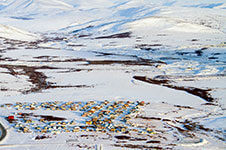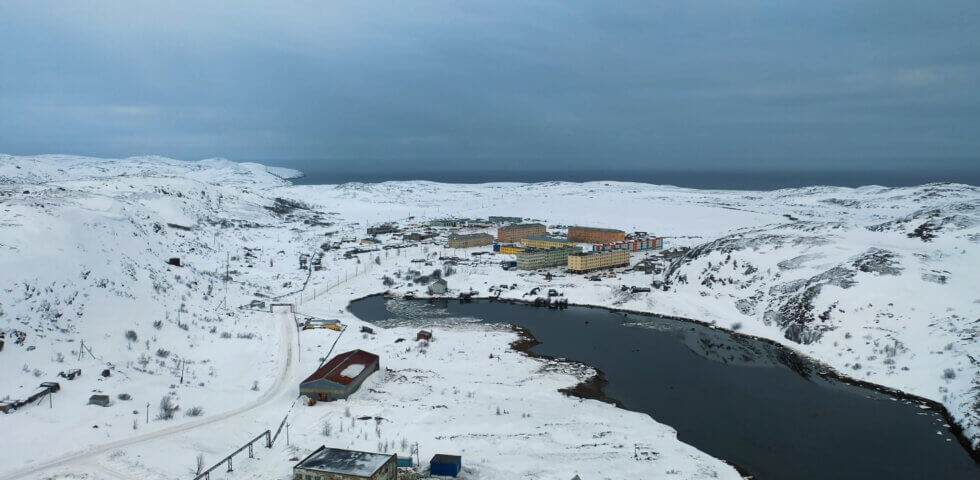Fiber optics and broadband Internet access have changed the world in so many ways. If you look back, it wasn’t that long ago that our Internet access wasn’t the greatest – especially when you think back to the dial-up days of the ‘90s when downloading a song or a video could take hours. While this might be a distant memory to some users, it’s a daily reality for those living in rural Alaska where access to broadband is either spotty or altogether nonexistent.
The ability to scroll through social media, take a college course online, have access to telemedicine, and being able to work remotely are a few of the amazing benefits that broadband offers most Americans living in the lower 48. Yet these benefits are hard to come by in portions of rural Alaska. Without connectivity, these communities lack the options and benefits that so many of us throughout the country and around the world take for granted each and every day.
Quintillion’s mission is to improve economic and national security in Alaska by enabling connectivity through high-speed Internet to unserved regions of Alaska. By laying fiber in areas where these benefits have yet to be realized, once in place, the benefits of modern infrastructure will truly change the lives of many residents in rural and remote Alaska.
Challenges That Residents of Remote Alaska Face Due to the Lack of Broadband Service
“Connectivity is everything. And it’s something that we all take for granted,” says Hallie Bissett, Quintillion’s consultant for community outreach and travel affairs.
Though much of Alaska – particularly the larger areas of Juneau, Anchorage, and Fairbanks – does have Internet access, this is not the case in the outer, remote regions of the state where in many villages the service is either very slow or unavailable. These communities rely on one another to get their information, and sometimes the word travels too slowly as was the case during the COVID-19 pandemic.
According to Hallie Bissett, “Some villages that I’ve visited are waiting two weeks to download one simple email. They have a lack of telemedicine access, no access to remote learning for children in school, and the lack of connectivity and access to the outside world was actually a direct cause of some Covid-related deaths in the area during the height of the pandemic.”
In addition, most villages are so far away from fiber that they simply don’t have a reliable connection. Some villages are up to 60 hops away from a fiber source. This is why bringing in fiber to the rural areas of Alaska is going to greatly enhance the infrastructure – and service around Alaska is only going to get better because of projects Quintillion is implementing.
How Will Improved Broadband Benefit Remote Alaskan Communities or Help Them Grow?

Improving broadband in rural and remote Alaska can have numerous benefits for individuals, businesses, and many village communities who do not currently have access to the benefits that Alaskans in more populated regions – and in the lower 48 – currently enjoy.
A few potential benefits include:
Improved Access to Education
With high-speed Internet, students in rural Alaska will have access to online learning materials, video lectures, and other educational resources. This can help level the playing field for rural students who may have limited access to traditional educational opportunities.
According to Bissett, “Many people in rural Alaska are excited about the possibility of connecting with other indigenous people from other villages. And kids in school are really excited about being able to preserve and teach their native language to others online. Really, for these communities, having improved broadband is less about what they could learn from the world and more about what they could teach the world. Because opening up and sharing their culture with the world is going to be a beautiful thing,” she states.
Enhanced Healthcare Services
Poor access to hospitals and medicine in remote parts of Alaska can potentially be life-threatening to people in villages who have to travel miles to be seen by a healthcare provider. But with improved broadband, the implementation of telemedicine can be a game changer for these communities.
Telemedicine is becoming increasingly popular, and with improved broadband in rural Alaska, patients can receive virtual consultations and remote monitoring from medical professionals, potentially improving their overall health and wellness.
Increased Economic Opportunities
Better broadband connectivity can also help rural Alaskans access greater economic opportunities such as starting new businesses, reaching customers in other regions or even countries, and accessing new markets. It can also attract new businesses and investment to the area.
Bissett offers, “The ability to work from home, opening up job opportunities for rural communities to other industries is going to be huge. Because if you’re from a village, you probably love the lifestyle and want to live there. But in order to survive you need to have a skill set that provides options in other industries, whether in marketing or any other that you can bring back to your community. And improving broadband in these villages can open up so many possibilities.”
Improved Public Safety
Improving broadband can also enable emergency services to better communicate with one another, and can also help first responders access critical information more quickly during emergencies. This can mean the difference between life and death in remote regions that are without access to most services.
Improved Quality of Life
Improved broadband can enable people in rural Alaska to stay connected with friends and family, participate in online communities, and access entertainment and cultural resources they may not otherwise have access to. This can help combat feelings of isolation and improve the overall quality of life.
Overall, improving broadband in rural Alaska can help create a more connected and equitable society, improve healthcare outcomes, spur economic development, and enhance public safety.
Bissett explains, “Simple things like being able to sell Alaskan native artwork online is going to be a great thing for many native artists who would love to share more of their work with larger communities, and with the world.”
What is the Future of the Expansion of broadband Service in Alaska?
Hallie Bissett recommends that people in villages and those in unserved communities conduct Internet speed tests from home. This can be done at Tribalready.com or via Alaska.gov.
According to Bissett, “We are still collecting the data to advocate that the unserved area maps that were initially made are inaccurate. And we’re doing this to show that we need more funding for broadband in rural communities. Both for national security and economic reasons,” she explains.
Would you like to discover more about Quintillion’s efforts to bring improved broadband services to remote regions of Alaska? Reach out to Quintillion today to learn more.















